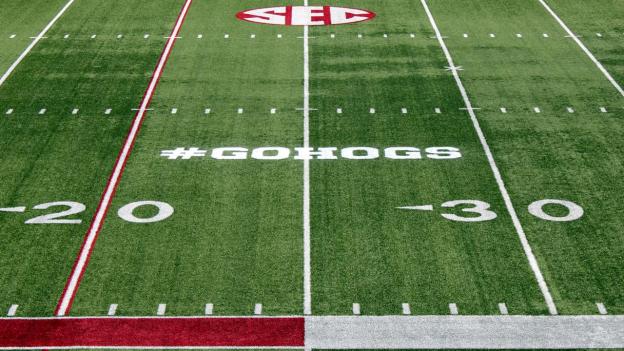
Outlined within a recently approved measure specific to rules pertaining to football, the National Collegiate Athletic Association (NCAA) has banned the use of Twitter hashtags or Twitter handles sprayed directly on the field. In addition, the rule also bans website URLs from being displayed anywhere on the field. Colleges that want to engage with fans over Twitter during the game will have to find a new location to display the school’s hashtag. For those unfamiliar with the hashtag system, encouraging a large group of people to use a specific hashtag at the end of their tweet on Twitter increases the possibility that particular hashtag with start trending on the social network.

After Mississippi State kicked off the trend, other schools jumped into the Twitter fray as well. For instance, N.C. State added #GOPACK to the 50-yard line, Arkansas added #GOHOGS to the 25-yard line and Michigan added #GOBLUE to the 25-yard line as well.
It’s important that the NCAA did not ban the use of hashtags around other areas of the stadium. Schools can still display Twitter hashtags on digital displays or printed banners. However, one of the advantages to printing the hashtag on the field was that everyone in the stadium was able to easily see the phrase. While many in the Twitter community are mocking the NCAA for the ruling, it’s likely that the move was motivated by the potential for abuse through paid advertisements. However, the NCAA could have simply restricted the sale of the hashtag space to any outside advertiser as opposed to banning hashtags from the field completely.


